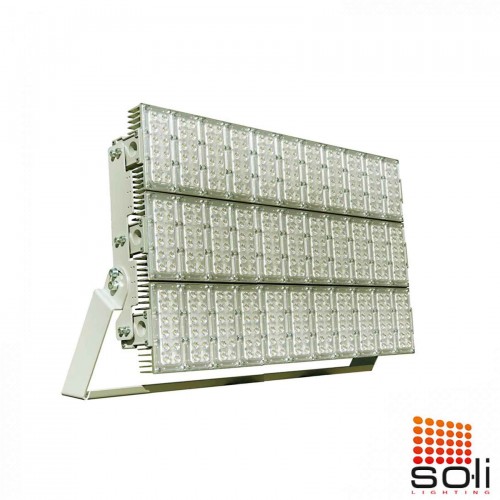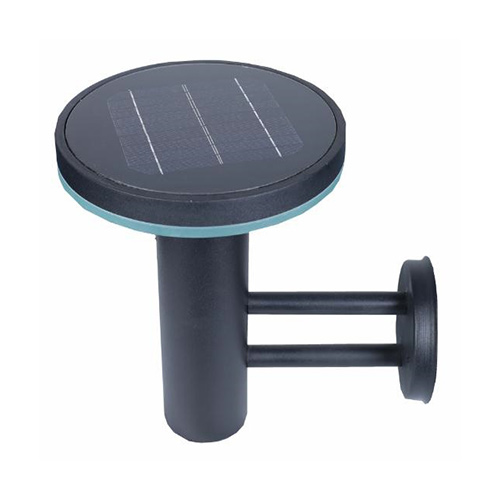Keep Lighting Yourself With Technology
The rapid growth in users' use of smartphones and tablets as interfaces for lighting control is driving massive growth in the smart lighting market. Smart lighting has multiple dimensions. Making lights more sensitive to personal presence is a fundamental dimension of smart lighting. LED technology has given lighting manufacturers the chance to add more control to their products. This is accelerating the development of smart and connected lighting systems that provide features and benefits that cannot be achieved with traditional lighting systems. Adding intelligence and connectivity to fixtures promises to deliver valuable efficiency and productivity gains. Via a controls-ready driver, LEDs can be easily integrated with sensors, embedded processors and communication modules to provide highly adaptive lighting.
Bluetooth or WiFi
Connected lighting systems use a wireless or wired communication platform to simplify light management as well as commissioning and software upgrades. LED lights are increasingly being developed and designed to support the latest wireless technologies. Wireless solutions provide faster, easier and more cost-effective installation and deployment, while providing flexibility in the deployment of endpoints. Wireless lighting systems are usually organized using network architecture, where each device in the network, called a node, can interact with a number of surrounding nodes and communicate with a controller over multiple paths. Mesh networks are self-configuring and self-healing. The interoperability and standardization offered by wireless networking protocols such as Bluetooth Mesh and Thread enables network integration of other building automation and energy management tasks. This integration provides opportunities to create a wide variety of services, benefits, and revenue streams through an end-to-end software framework. Connected lighting systems can also be implemented in a wired platform using Power over Ethernet (PoE) technology. PoE ensures that power is delivered over the same low-voltage cable infrastructure that supplies the Ethernet data. PoE lighting is a promising technology expected to be widely used in commercial buildings.
The convergence of LED lighting with the Internet of Things (IoT) opens up a whole new world of possibilities for the lighting industry. The introduction of the IoT as the backbone of connected lighting systems enables a wide variety of applications to be built on IP-based network infrastructure. IP capability allows lighting products and other smart nodes to work together, share data and services, and build larger, more complex and sophisticated applications. Through an IoT platform and multiple sensors, smart lighting systems are transformed into context-aware smart devices that can communicate with IoT gateways and devices within the network, and convert a digital command into physical action. IoT-enabled lighting solutions can deliver significant operational efficiencies, enable a range of data-driven services, and generate new revenue streams. The megatrend introduced by the IoT is pushing for more investment to overcome the interoperability, reliability and security challenges of connected lighting in the downstream sector.
Human Centered Lighting
Quality lighting not only addresses traditional goals such as visual comfort, task performance, safety and aesthetics, but has also been observed to promote positive effects on human psychology and physiology. One of the driving forces behind many of the latest innovations in the lighting industry is human-centered lighting (HCL). HCL goes beyond basic visual needs to support people's physiological and psychological health. Humans use environmental cues from light to synchronize the body's internal biological clock with the earth's 24-hour light-dark rotation cycle. The internal biological clock located in the suprachiasmatic nucleus (SCN) of the hypothalamus regulates human circadian rhythms. Since a large part of modern life is spent indoors, there will be differences between the biological rhythm and the external day/night rhythm due to the absence of static lighting and circadian drift. Disruption of the biological rhythm can affect the normal release of hormones such as melatonin and cortisol. Impaired hormone production can interfere with cell metabolism and proliferation, inhibit the expression of clock genes associated with cancer and diabetes risk, and impair cognitive, psychological, and social performance.
Human-centered lighting explores a complete dynamic lighting scheme to strengthen the body's circadian rhythm and the natural cycle of biological functions. While conventional lighting systems provide static white light throughout the day, human-oriented lighting systems bring the dynamics of natural daylight to the building. The spectral composition and intensity of the interior lighting are intended to reflect the characteristics of the exterior daylight. The essence of human-centered lighting is the dynamic control of bioactive blue dosage. Exposure to blue light at higher wavelengths of light suppresses melatonin production and increases the secretion of other hormones such as cortisol, dopamine, and serotonin.
Human-centered lighting provides healthy bioactive blue dosages at the right biological time with adjustable white light technology. Dynamic white systems use advanced LED drivers and multi-channel light engines to allow flexible adjustment of the spectral composition and intensity of the light. These intelligently adaptable and/or user programmable systems offer the freedom to evoke specific emotional, physiological and psychological responses for improved atmosphere, performance, motivation, concentration and quality of life in homes, offices, schools, retail spaces and healthcare settings. HCL systems will proliferate in the coming years. This requires the lighting industry to stay at the forefront of tunable white lighting technology so it can keep up with the rapid pace of adoption of HCL.
Our ..
₺52,250
Ex Tax:₺52,250
The excite..
₺69,800
Ex Tax:₺69,800
&nbs..
₺42,250
Ex Tax:₺42,250
The excite..
₺24,350
Ex Tax:₺24,350
Our Soli L..
₺18,400
Ex Tax:₺18,400
&nbs..
₺6,450
Ex Tax:₺6,450
Our ..
₺8,700
Ex Tax:₺8,700
The excite..
₺26,600
Ex Tax:₺26,600
LED ..
₺5,250
Ex Tax:₺5,250
Road..
₺6,600
Ex Tax:₺6,600
About LED Flood Lights
- LED Flood Light Buying Guide
- Brain Of Led Flood Lights : LED Flood Light Drivers
- Can A Floodlight Be Used Instead Of Street Lights?
- Are LED Lights Suitable for Hazardous Locations?
- About High Bay and Low Bay Lighting
- 10 Benefits of LED Floodlights for Outdoor Lighting
- Main Factors of Outdoor LED Lighting Design
- Solar Floodlight
- Smart and Human Centered Lighting
- 4 Lighting Design For Post-Covid
- Health Risks That Are Actually Myth About LED Lights
- Things to Avoid When Upgrading Your Lighting Style to LED
- The Future of LED Lighting
- High Power LED Floodlight
- About Amount of Light And Light Quality
- LED Stadium Lighting Information
- Performance of LED Lights in Cold Weather
Usage Areas
- Sports Lighting
- How To Choose Stadium Lighting Company
- Aircraft Hangar Tips
- LED Warehouse Lighting
- Automotive Showroom Lighting
- Safety and Operational Tips for Light Towers
- Advantages and Applications of LED Street Lights
- How LED Street Lights Can Save Citizens Millions of Liras
- Outdoor LED Lighting
- Is LED Industry Evolving?
- LED For Car Parks
- Solar Street Lights
- Use of LEDs in Tunnel Lighting
- LED Lights for Your Garden Inside Your Home
- Solar Street Lights Calculation and Sizing


















